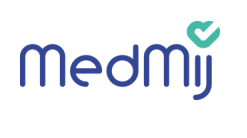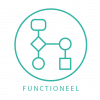Zandbak/MVPTO: verschil tussen versies
(Move note about known questionnaires to proper section) |
k |
||
| Regel 114: | Regel 114: | ||
===Client gets Questionnaire - PHR=== | ===Client gets Questionnaire - PHR=== | ||
| − | Upon retreiving the Task, the PHR system retreives the Questionnaire | + | Upon retreiving the Task, the PHR system retreives the Questionnaire resource using an ordinary HTTP READ operation: |
GET ''Task.input.valueReference.reference.value'' | GET ''Task.input.valueReference.reference.value'' | ||
Versie van 2 mrt 2020 09:33
{{#customtitle:MedMij FHIR Implementation Guide: Questionnaire and Questionnaire Response (Vragenlijsten)}} MedMij:Vdraft Issuebox FHIR IG


1 Introduction
This page describes the exchange of questionnaires and questionnaire responses within MedMij. A questionnaire is an organized collection of questions intended to solicit information from patients, providers or other individuals involved in the healthcare domain. These questionnaires may take the form of a straightforward flat list of questions, but they can consist of hierarchically organized groups and sub-groups. Likewise, there can be a wide range of question types, varying from simple fill-out forms to multiple choice questions and scales.
These questionnaires are captured using the FHIR Questionnaire resource, which defines the questions to be asked, their ordering and grouping, instructional text and the constraints on the answers. The results of a Questionnaire can be communicated using the QuestionnaireResponse resource. To support the logistics of assigning and answering a questionnaire, a Task resource is used.
This information standard is inspired by the international Structured Data Capture (SDC) implementation guide and tries to follow it where possible. However, the first version of this information standard is more restricted than SDC; specifically, the possibility for a XIS to pre-populate the questionnaire response is omitted in this first version. Also, contrary to most other use cases for MedMij, no specific HCIM models have been identified for prescribing and answering questionnaires.
Note: this page is part of the MedMij FHIR Implementation Guide and is a technical representation of the functional design published on this wiki page.
2 Actors involved
Table 1 shows the relevant actors, systems and FHIR Capability Statements in MedMij context. The Capability Statements demonstrate the minimum conformance requirements for the described use cases. The role that covers the provision of a Questionnaire MAY be integrated in the XIS or MAY be supported by a separate questionnaire repository. That means the role of XIS in table 1 MAY also be supported by a questionnaire repository.
Note: in the (TODO: waar is dit vastgelegd?), only the PGO can initiate communication with the XIS, not the other way around. Therefore, the healthcare provider needs to inform the patient about the questionnaire offline. The PGO should provide an interface to the user to manually check a specific healthcare provider for questionnaire tasks.
(TODO: de meeste andere standaarden hebben alleen een tabel met actors, niet met transactions) (TODO: de andere standaarden hebben een capabilitystatement per actor, niet per actor/resource. Dat zouden er bij ons drie worden: client, server en repository)
| Actors | Systems | FHIR Capability Statements | |||
|---|---|---|---|---|---|
| Name | Description | Name | Description | Name | Description |
| Patient | The user of a personal healthcare environment retrieves a QuestionnaireReferenceTask | PHR | Personal health record | CapabilityStatement: Client gets Task | FHIR Client requirements |
| Patient | The user of a personal healthcare environment retrieves a Questionnaire and updates the QuestionnaireReferenceTask. | PHR | Personal health record | CapabilityStatement: Client gets Questionnaire | FHIR Client requirements |
| Patient | The user of a personal healthcare environment provides a QuestionnaireResponse and updates the QuestionnaireReferenceTask. | PHR | Personal health record | CapabilityStatement: Client provides QuestionnaireResponse | FHIR Client requirements |
| Healthcare professional | The user of a XIS provides a QuestionnaireReferenceTask. | XIS | Healthcare information system | CapabilityStatement: Server provides Task | FHIR Server requirements |
| Healthcare provider / Questionnaire repository | The healthcare provider provides a Questionnaire. Note: this may be an ordinary web server | XIS | Healthcare information system | - | - |
| Healthcare provider | The healthcare provider accepts an update the QuestionnaireReferenceTask | XIS | Healthcare information system | CapabilityStatement: Server accepts update to Task | FHIR Server requirements |
| Healthcare provider | The healthcare information system accepts creation of a QuestionnaireResponse and an updates the QuestionnaireReferenceTask. | XIS | Healthcare information system | CapabilityStatement: Server accepts QuestionnaireResponse | FHIR Server requirements |
Table 1. Actors, systems and FHIR Capability Statements
3 Boundaries and Relationships
The MedMij use case for questionnaires overlaps partially with SDC use cases. Where possible, the SDC profiles are re-used. However, the current use case is more restricted than the SDC use cases. Furthermore, the MedMij derived profiles reference HCIM based profiles for common resources like Patient, Practitioner, PractitionerRole and Organization.
The QuestionnaireResponse.author tells who the person is that provided the answers. For the current MedMij use case it may be a patient. The QuestionnaireResponse.subject tells who the answers apply to. For the current MedMij use case it may be a patient, organization or practitioner.
4 Use case: retrieve questionnaire
4.1 List of invocations
The order of invocations follows the Functional Design. At first the questionnaire is assigned to the patient by a QuestionnaireReferenceTask resource. The PHR extracts the reference to the Questionnaire resource and retrieves it from the XIS or from an external questionnaire repository.
4.1.1 Client gets Questionnaire reference - PHR
Using a search operation, the PHR provides a Task resource containing a reference to the patient questionnaire from the XIS. The Task SHALL conform to the MedMij QuestionnaireReferenceTask profile. A search interaction can be performed by an HTTP GET or command as shown:
GET [base]/Task/{?[parameters]{&_format=[mime-type]}}
The Task.status SHALL be set to "requested", and the Questionnaire resource SHALL be referenced using Task.input.valueReference.reference.
4.1.2 Client gets Questionnaire - PHR
Upon retreiving the Task, the PHR system retreives the Questionnaire resource using an ordinary HTTP READ operation:
GET Task.input.valueReference.reference.value
The Questionnaire resource SHALL conform to the MedMij Questionnaire profile.
Note: for known questionnaires, a PHR may choose to use hardcoded instead of generated forms. However, PHRs implementing this information standard should always be able to generate a form for the minimal Questionnaire subset defined below. Also note that a known questionnaire can only be recognized by its reference in the Task; currently, no coding system exists to identify known questionnaires.
5 Use case: send questionnaire response
5.1 Client renders questionnaire form - PHR
The PHR should present the questions defined in the retrieved Questionnaire resource to the user, in accordance with their type, overall structure of the questionnaire, and restrictions on the answers. MedMij defines the following minimal subset of Questionnaire item types that a PHR MUST support:
- Group
- Display
- Boolean
- Decimal
- Integer
- Date / dateTime / time
- String
- Choice / open-choice
- Quantity
The following elements of the Questionnaire.item element MUST be supported:
Questionnaire.item.enableWhenQuestionnaire.item.requiredQuestionnaire.item.options
In addition, the following extensions MUST be supported:
A PHR MAY support other Questionnaire item types as well. However, if a PHR is unable to process any one part in the Questionnaire, it MUST reject the Questionnaire altogether. See #Handling errors.
5.2 List of invocations
This FHIR implementation guide assumes that the PHR system is able to make a connection to update the Task resource at the XIS and send the QuestionnaireResponse resource to the XIS. It does not provide information on finding the right XIS nor does it provide information about security. These infrastructure and interface specifications are described in the 'MedMij Afsprakenstelsel'.
5.2.1 Client accepts or rejects the Questionnaire
Upon retrieving the Questionnaire resource, the PHR checks if it is able to present a form that completely covers all the questions and structure and subsequently updates the Task resource using an update operation.
- If the Questionnaire can be processed, Task.status SHALL be set to "accepted".
- If the Questionnaire cannot be processed, Task.status SHALL be set to "rejected". See #Handling errors.
PUT [base]/Task/id{?[parameters]{&_format=[mime-type]}}
5.2.2 Client provides QuestionnaireResponse - PHR
The answers to the questions in the Questionnaire resource are captured using an instance of the QuestionnaireResponse resource, which SHALL conform to the MedMij questionnaire response profile.
Upon completion of the questionnaire by the user, the PHR system sends the QuestionnaireResponse resource to the XIS and simultaniously closes the original Task resource on the XIS, using a FHIR transaction.
A transaction interaction is performed by an HTTP POST command to the XIS endpoint:
POST [base]/{?[parameters]{&_format=[mime-type]}}
The content of the post submission should be a Bundle resource with Bundle.type set to "transaction", and containing both the updated Task and the QuestionnaireResponse, according to the following structure (where ORIGINAL_ID is the original Task.id from the Task retrieved from the server):
<Bundle xmlns="http://hl7.org/fhir">
<type value="transaction"/>
<entry>
<resource>
<Task>
<id value="ORIGINAL_ID"/>
<meta>
<profile value="..."/>
</meta>
<status value="completed"/>
<output>
<type>
<text value="QuestionnaireResponse"/>
</type>
...
<valueReference>
<reference value="urn:uuid:e607a55c-194d-447a-8cc7-7ab90e3660c3"/>
<display value="Response to questionnaire XXX">
</valueReference>
</output>
</Task>
</resource>
<request>
<method value="PUT"/>
<url value="Task/ORIGINAL_ID"/>
</request>
</entry>
<entry>
<fullUrl value="urn:uuid:e607a55c-194d-447a-8cc7-7ab90e3660c3"/>
<resource>
<QuestionnaireResponse>
<meta>
<profile value="..."/>
</meta>
...
</QuestionnaireResponse>
</resource>
</entry>
<request>
<method value="POST"/>
<url value="QuestionnaireResponse"/>
</request>
</Bundle>
If the server is able to process both resources, it SHALL return a HTTP 200 OK status code and SHALL also return a Bundle of type 'transaction-response', that contains one entry for each entry in the request, in the same order, with the outcome of processing the entry. If the server is unable to process either of the resources, it SHALL not process any one of them and SHALL return an HTTP 400 or HTTP 500 type response (see #Handling errors).
Note: updating the QuestionnaireResponse is not supported in the use case.
6 Tracking the status using the Task resource
6.1 Introduction
Retreiving the questionnaire and sending the answers are two separate use cases, but they are meant to be used back-to-back; the XIS that prescribes the questionnaire ultimately expects a response to it (and a questionnaire response is only sent in response to a prescription, at least in the current version). To track the status of the prescription fullfillment, a Task resource at the XIS server is used, which transitions through various stages until completion.
It is the responsibility of the PHR to update the task at the different stages in the life cycle of the questionnaire, using an update operation. This implies that the the Task resource should be made accessible by the XIS server for these updates, at least for the expected life time of the fullfillment cycle. Additionally, the PHR may perform a read of the Task resource at any time.
It is primarilly the responsibility of the PHR to bring the task to a closed state. However, it is not guaranteed that the required update operation succeeds. If the PHR is unable to bring the task to a closed state, the server may eventually close the task because of business rules.
6.2 Task state machine
The Task resource can transition through the following states:
/----------------/-------------------\
| | |
requested +--+-> accepted -+---> completed ----+---> X
| | | |
| \-------------\--> failed --------|
| |
\--> rejected -----------------------/
TODO: uittekenen.
Only the transactions shown here are allowed. The server should reject any update that attempts to perform an illegal transaction. See #Handling errors.
7 Handling errors
7.1 Task update failures
The server may be unable to accept an update the Task resource due to errors or business rules (e.g. an illegal status transaction). In this case, the server should respond with a 400 type status code, accompanied by an OperationOutcome resource providing additional details. See [the relevant section] in the FHIR spec.
The PHR should try to recover from this response. If this is not possible, the PHR should attempt to update the status of the Task resource on the server to "failed" and stop further processing. If it is not possible to perform this task update, the task effectively remains in a stalled position. The server may eventually close it due to business rules.
7.2 Other errors
TODO: beter uitwerken
- If the search operation fails (cannot be executed, not that there are no matches), the return value is a status code 4xx or 5xx with an OperationOutcome. See the [relevant part of the FHIR spec for more information].
- The read operation to retreive the Questionnaire resource is an ordinary HTTP operation. If this operation fails (after repeated attempts), the PHR should close the task with status "failed".
- If the PHR is unable to fully render the Questionnaire to the PHR user, it should close the task with status "rejected".
- If the PHR is unable to process the user response or in some other way is unable to create a QuestionnaireResponse resource, it should close the task with status "failed".
- If the server is unable to process the transaction with the QuestionnaireResponse, it SHALL return an HTTP 400 or HTTP 500 type response instead of a 200 OK response. If the response is not 200 OK, the PHR should close the task with status "failed".
8 Interactions, operations, search parameters
8.1 Interactions
The following logical interactions are needed for the use case of Questionnaire and Questionnaire Response:
8.2 Operations
The following operations have been specified for use in SDC. The MedMij use case has no identified requirement for these operations. This specification therefor does not define that system roles implement them.
- Populate Questionnaire
- Generate HTML for Questionnaire
- Generate a link to a Questionnaire completion webpage
- Build Questionnaire
8.3 Search parameters
The following search parameter types and search result parameters need to be supported for this use case.
Search parameter types:
8.4 List of StructureDefinitions
The unique FHIR profiles based on HCIM applicable in a broader context than the exchange of Questionnaire and Questionnaire Response.
| FHIR Profile | FHIR Resource | HCIM NL / Concept |
|---|---|---|
| http://fhir.nl/fhir/StructureDefinition/nl-core-patient | Patient | Patient |
| http://fhir.nl/fhir/StructureDefinition/nl-core-practitioner | Practitioner | Zorgverlener |
| http://fhir.nl/fhir/StructureDefinition/nl-core-practitionerrole | PractitionerRole | Zorgverlenerrol |
| http://fhir.nl/fhir/StructureDefinition/nl-core-organization | Organization | Zorgaanbieder |
| http://nictiz.nl/fhir/StructureDefinition/nl-core-questionnaire | Questionnaire | Questionnaire |
| http://nictiz.nl/fhir/StructureDefinition/nl-core-questionnaireresponse | QuestionnaireResponse | Questionnaire Response |
| http://nictiz.nl/fhir/StructureDefinition/QuestionnaireReferenceTask | Task | Questionnaire Reference |


